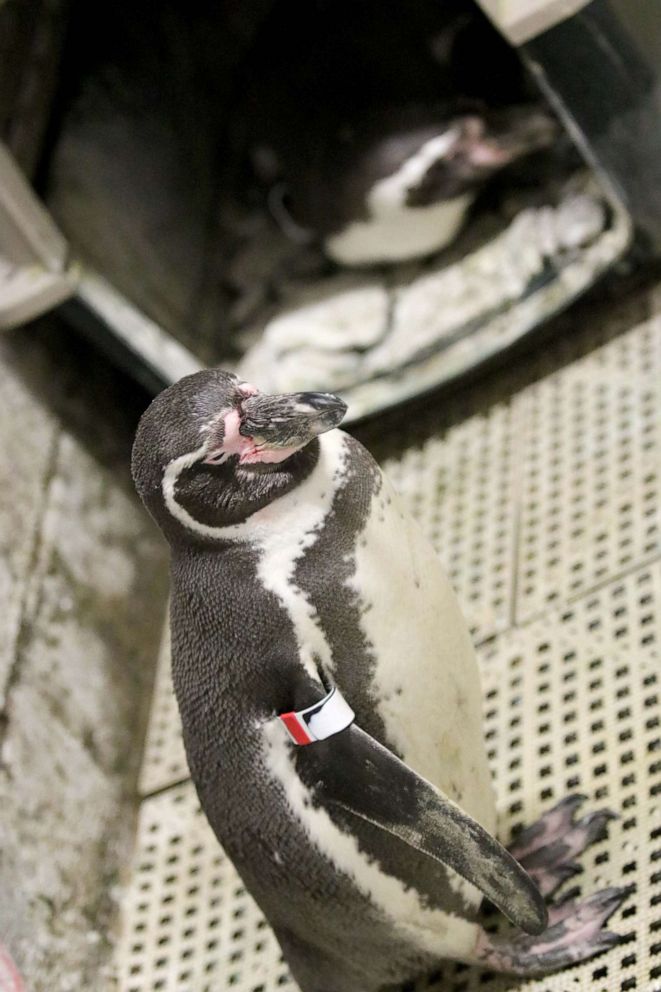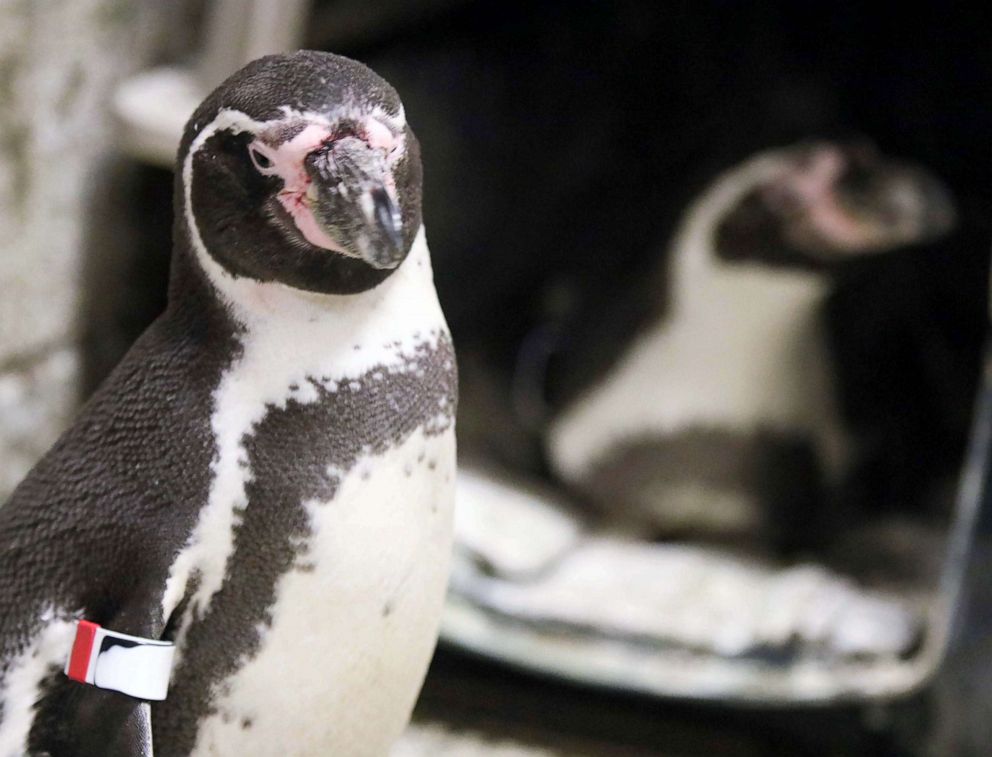Two Humboldt penguins in upstate New York are now the proud parents of a fluffy penguin chick.
Elmer and Lima, both male, are the first same-sex penguin pair at Rosamond Gifford Zoo in Syracuse, New York. During breeding season this past autumn, zoo staffers noticed that the two started paying more attention to each other and spending time together, even teaming up to defend their territory inside the zoo’s Penguin Coast exhibit, which is now home to 28 Humboldt penguins.
“Last fall, Elmer and Lima were noticed to be carrying rocks around together, which is kind of an early stage of courtship and looking for a place to potentially build a nest,” Rosamond Gifford Zoo Director Ted Fox explained to “Good Morning America.” “They were very much interested in each other from early on and were showing all the exemplary signs of pairing and forming of a strong pair bond.”

Zoo staffers also noticed that the chick’s biological penguin parents “weren't particularly good with their eggs,” so staffers offered up one of their eggs to Elmer and Lima to incubate. According to Fox, penguins can’t distinguish between their eggs and other eggs so it was easy for Elmer and Lima to assume that it was theirs. The duo then took turns sitting on it, keeping it warm, until the Humboldt chick hatched on New Year’s Day.
So far, Fox said the chick is already showing signs it’ll likely grow up to be a “well-rounded and confident penguin in the colony.”
“This chick seems to be very outgoing and is already coming to the front of the nest to look around and explore the outside,” he said.
But unlike his adopted parents, who are primarily black and white, the one-month-old chick is currently brown with velvety down feathers. He’s growing quickly and will soon get his pin feathers and then gray juvenile plumage before he turns black and white. The chick is also still small, having weighed in at 8 ounces during his first health check at 5 days old.

Humboldt penguins are considered a vulnerable species as multiple factors threaten their existence. In the wild, the aquatic birds, which are native to the coasts of Peru and Chile, can be impacted by climate change and natural or man-made disasters.
The penguins are especially vulnerable during their annual molt, which means they shed all their feathers and can't swim, Fox explained.
“They eat a lot of food just before them molting, to put on a lot of extra weight, and then they don't eat," he said. "They pretty much sit on the beach and wait until their feathers grow back in, which takes a few weeks. And in that time, if there was a tsunami or oil spill or any number of things, it could wipe out most of the population in one incident."
Rosamond Gifford Zoo has yet to announce the chick’s name. The facility usually works with local schools and community members to select a penguin chick’s name, typically a Hispanic name to honor the species’ native regions. But there is at least one noteworthy exception: Elmer the penguin got his name from the type of glue used to repair the egg he ended up hatching from.




